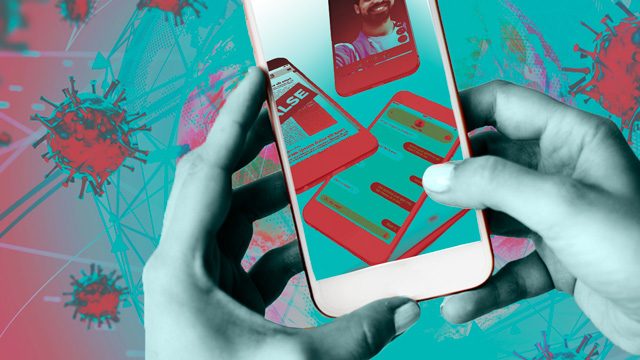SUMMARY
This is AI generated summarization, which may have errors. For context, always refer to the full article.

MANILA, Philippines – As we spend more time at home to protect ourselves, our loved ones, and our community from the COVID-19 pandemic, messaging apps have been essential for staying connected. But what do we do when these spaces become breeding grounds for misinformation?
We’ve all been there, after all. A well-meaning relative sends a message to your group chat with a list of tips for preventing the novel coronavirus, including gargling saltwater every day and keeping a peeled onion in every room in the house.
Doing these won’t actually hurt anyone, but there are also messages that can lead to harmful self-medication, incite hate over baseless rumors, and confuse the public about available resources.
How can you keep your chat groups misinformation-free? Here are some tips.
Arm yourself with facts
To be able to say something is false, you first need to know what’s true. Brush up on the basics of the novel coronavirus and the disease it causes, COVID-19, and find out what’s both known and still unknown about the disease.
News websites will often have an article summarizing things to know about the pandemic, and government agencies like the Department of Health (DOH) or the US Centers for Disease Control and Prevention (CDC) will list facts about the disease as well.
The World Health Organization (WHO) also has a page of frequently asked questions and a page debunking myths about the novel coronavirus.
It’s best to get your facts from more than one of these sources – if two or more experts agree on a piece of information, then it’s more likely to be true.
Trust primary sources
Most messages containing misinformation are forwarded from one person to another and often go unchecked. When unverified information is passed around this way, it becomes unreliable and dangerous – someone could have removed or added to the content of the message, and the message may push someone to inadvertently harm themselves.
The sources mentioned above – legitimate news organizations, government agencies, and the World Health Organization – are all examples of primary sources, where experts, scientists, doctors, and journalists who have personal knowledge about the novel coronavirus share what they have learned.
Other primary sources are texts of laws and other original documents, speeches, interviews, original research, data sets, survey data, and photos, video, or audio that capture a certain event.
Recognize potentially harmful messages
Not all forwarded messages are bad or sent with the intent to mislead but there are some tell-tale signs that a message isn’t from a legitimate source.
Most of these messages induce panic, use fake logos, sound too good to be true, or encourage you to pass the message along.
For example, there are a lot of false information about supposed cures or ways to prevent coronavirus being spread online. A series of “advice” for preventing an infection with a UNICEF logo also went around, as did rumors that the government “raided” private hospitals for their personal protective equipment.
If you suspect a message passed along in your chat group is untrue, then ask the sender where they received their information. If they’re also unsure, you can open up a conversation about sharing unverified information.
Don’t share it
These misleading messages should stop with you – if you don’t know if a message’s content is true or not, don’t pass it along! Take a minute or two to verify that the forwarded message has reliable information and if it doesn’t, share your corroborating evidence with your friend or family member.
Be kind – not condescending – and discuss with those in your chat group about why these messages can cause harm and encourage them to develop a healthy skepticism about things they see online.
Ask the fact checkers
If you can’t seem to verify a piece of information that was sent to you, there are many fact checking websites, verified by the International Fact-Checking Network (IFCN) at Poynter, who can check the facts for you.
You can also try looking for a specific dubious claim in the IFCN’s database of around 800 false or misleading claims about the novel coronavirus. Fact checkers from more than 70 countries have contributed to this database and it includes articles published in at least 40 languages.
Rappler is one of the IFCN’s signatories in the Philippines, along with Vera Files and Agence France-Presse.
You can send screenshots of suspicious messages to factcheck@rappler.com for help verifying these claims. – Rappler.com
Add a comment
How does this make you feel?
There are no comments yet. Add your comment to start the conversation.